This form of epilepsy usually begins between the ages of 3 and 12 years and is much more common in girls (60-75% of cases) than boys. Absences are brief staring episodes with loss of awareness, and these may occur very frequently day-to-day. CAE is idiopathic and generalised in origin meaning that there is no known cause, and it affects both sides of the brain and consciousness is lost. Up to the point where seizures begin there is usually no indication of any underlying problems or developmental concerns although some children (10-15%) may have a history of febrile seizures. In some cases, a close family history of genetic generalised epilepsy may be present.
Typical Absence Symptoms
When a child has an absence seizure they will usually stop what they are doing, lose awareness of their surroundings, stare ahead, be unresponsive to being spoken to, show slight repetitive motion of their hands, eyes or face areas e.g. blinking, or head nodding.
This brief loss of consciousness can look like a very short daydream or lack of attention. It may last from 3-20 seconds, so brief it can be difficult to notice them happening. The child is also unlikely to be aware of what has happened though they may be aware that they have missed something.
Because the seizure is so brief the child is not that likely to fall unless they are in a situation requiring balance, for example on a bike. Following a typical absence seizure the child may resume whatever they were doing with little effect on functioning although sometimes they may be a little confused.
Diagnosis
A full complete history, given to the doctor, is always essential in making a diagnosis. An EEG (electroencephalogram) test which measures the electrical activity going on in the brain, will show a very obvious pattern which will help to confirm the diagnosis of childhood absence epilepsy. These changes become obvious when the child is asked to breathe (hyperventilate) deeply and quickly during the EEG test. When an absence occurs on hyperventilation it shows a very characteristic EEG pattern in the form of a spike and wave occurring every 3 seconds or between 2.5-4 seconds.
Treatment
Typical absence seizures are usually controlled by anti‐seizure medications (liquid or tablets), either with Sodium Valproate (Epilim) or Ethosuximide (Zarontin) or sometimes both. Lamotrigine (Lamictal) or Levetiracetam (Keppra) can also be effective alone, or as add-on therapies. Sodium valproate can be harmful to unborn babies and any concerns about it’s use in the child-bearing age-group must be discussed with the prescribing doctor.
Prognosis
Typical absences tend to stop by the teen years and do not tend to carry on into adult life. About 60% of children with CAE will stop having seizures by their teens. However, remaining children with absence epilepsy may start to have other types of idiopathic generalised epilepsy (IGE) syndromes, such as juvenile absence epilepsy (JAE) and juvenile myoclonic epilepsy (JME). Children may have initial problems in school with attention, learning and memory and anxiety - these issues can improve when their seizures are recognised and treated.
Further Information
- Further information on Anti-Seizure Medications can be found by visiting the 'Treatment' section of our website.
- Further information on diagnosis can be found by visiting the 'Diagnosis' section of our website.
- Other useful resources surrounding epilepsy can be found throughout our 'Epilepsy Information' section.
- If you need any information or support regarding epilepsy, contact your local Community Resource Officer - you can find their details by visiting the 'Our Local Service' section of our website.
